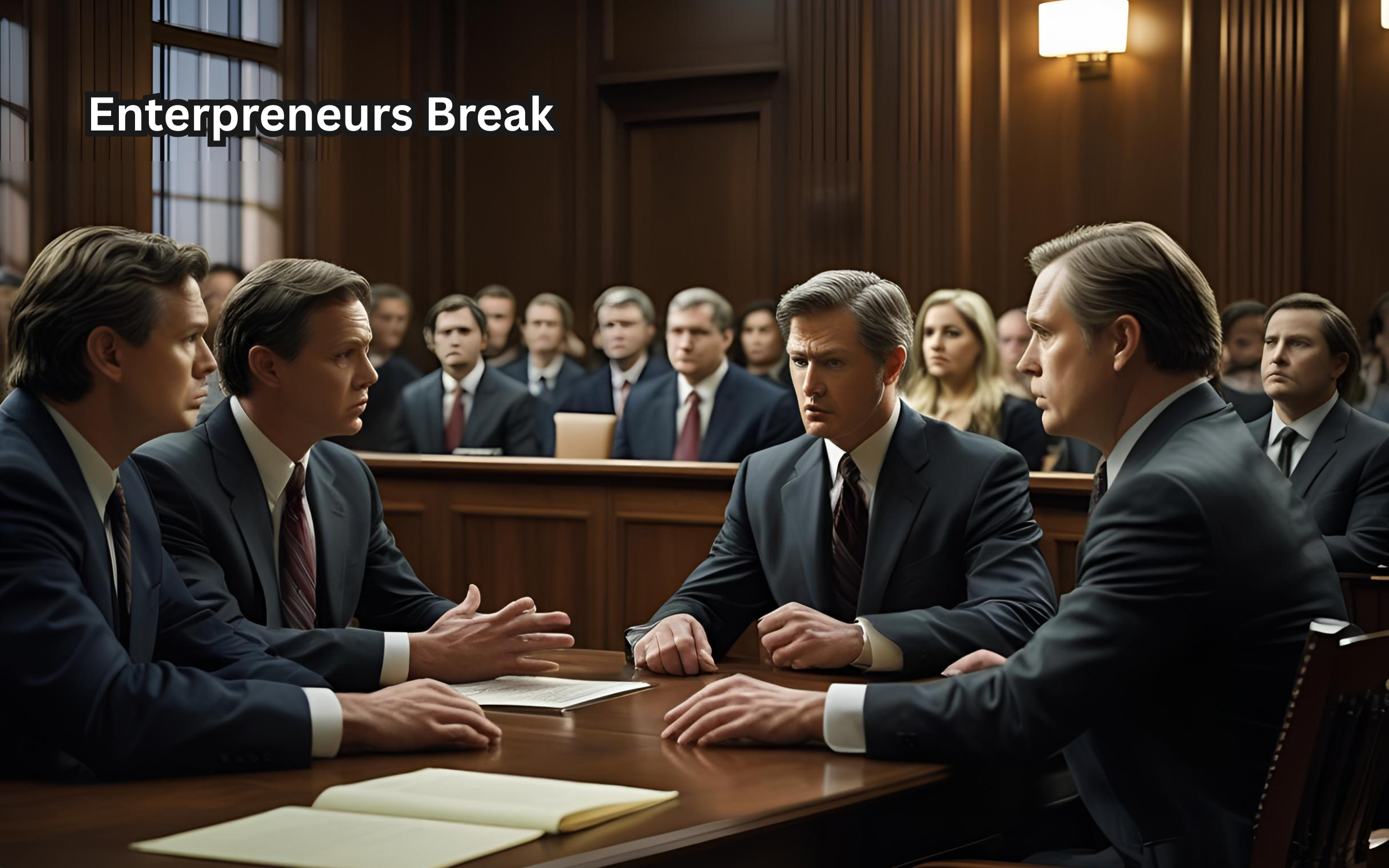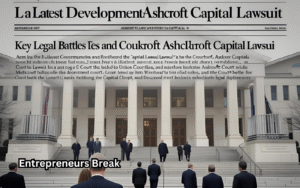Ashcroft Capital Lawsuit: Uncovering the Legal Storm Surrounding a Real Estate Giant

The ongoing legal battle involving one of the most recognized names in real estate syndication.
Ashcroft Capital, known for managing multifamily real estate investments, now faces serious allegations that have raised concerns across the investment community.
This title reflects the gravity of the situation—where claims of financial misrepresentation, fund mismanagement, and lack of transparency have sparked a legal storm.
The lawsuit not only threatens the company’s reputation but also sends shockwaves through the broader real estate investment market.
By using the phrase “uncovering the legal storm,” the title emphasizes the in-depth analysis and investigation into both the legal and financial aspects of the case.
It aims to inform, alert, and engage investors, legal professionals, and industry observers about the risks, facts, and potential implications of the Ashcroft Capital lawsuit, making it essential reading for anyone in the real estate world.
Ashcroft Capital Lawsuit: What Investors Need to Know

The Ashcroft Capital lawsuit has sparked widespread concern among investors and stakeholders in the real estate syndication space.
Ashcroft Capital, known for its multifamily investment opportunities, now finds itself in the legal spotlight. bn
Investors are eager to understand how this lawsuit might affect their investments and the broader market.
At the core of it are allegations regarding mismanagement of funds, misleading statements, and breach of fiduciary duty.
These claims have prompted legal scrutiny and opened the door to a complex investigation.
For investors, understanding the it means staying informed on both the facts and the potential implications.
Being proactive about monitoring the legal process is essential to protecting current and future investments.
Whether you’re a passive investor or syndication expert, this lawsuit highlights the importance of due diligence and transparency in investment firms.
Inside the Ashcroft Capital Lawsuit: Allegations, Facts & Updates
Digging deeper into the Ashcroft Capital lawsuit, it’s clear that the allegations are serious and multi-layered.
The plaintiffs accuse Ashcroft Capital of misrepresenting the financial health of their real estate projects.
According to the filed complaint, the company may have provided inflated performance metrics and failed to disclose risks to investors.
Another focal point of the Ashcroft Capital lawsuit is the handling of investor capital.
Claims suggest that some funds may have been redirected or misappropriated without proper disclosure.
These issues, if proven, could point to a breach of both legal and ethical responsibilities.
On the facts side, the company has denied all wrongdoing and is preparing a robust legal defense.
The lawsuit is currently in the pre-trial discovery phase, and new updates are expected in the coming months.
Staying updated on it is crucial, especially for those directly or indirectly involved in real estate investing.
Is Ashcroft Capital Facing Legal Trouble? Full Lawsuit Breakdown
Yes, the Ashcroft Capital lawsuit represents a significant legal challenge for the company.
This full breakdown aims to simplify the legal proceedings for everyday investors and industry professionals.
The lawsuit includes multiple plaintiffs, primarily disgruntled investors, who allege fraudulent misrepresentation and financial negligence.
Legal documents reveal that the core of the Ashcroft Capital lawsuit lies in investor dissatisfaction with returns and disclosure practices.
Plaintiffs are demanding financial compensation and court-ordered reforms.
The company, in turn, has responded by emphasizing its compliance record and challenging the legal validity of the claims.
It’s important to note that while lawsuits are common in high-stakes investing, the Ashcroft Capital lawsuit has gained traction due to the company’s visibility in the multifamily real estate sector.
Legal analysts suggest that the outcome of the Ashcroft Capital lawsuit could influence future investor protections and disclosure norms in syndication deals.
Ashcroft Capital Lawsuit Explained: Impact on Investors and Market
The Ashcroft Capital lawsuit has created waves not just for the company but for the entire real estate investment market.
Investors are concerned about the ripple effect this legal action might have on similar firms and syndication models.
One of the central concerns of the Ashcroft Capital lawsuit is the potential loss of investor confidence.
If proven true, the allegations could result in financial penalties and reputational damage, affecting investor sentiment across the sector.
Beyond individual investors, fund managers and competing firms are re-evaluating their practices to ensure compliance and transparency.
The lawsuit may prompt regulatory agencies to tighten rules governing real estate syndications.
Market analysts warn that the Ashcroft Capital lawsuit could lead to short-term volatility in investor behavior and capital flows.
However, some also believe it may ultimately lead to a stronger, more transparent investment environment.
The Ashcroft Capital lawsuit, therefore, is not just a company issue—it’s a market-wide event.
Latest Developments in the Ashcroft Capital Lawsuit (2025 Update)

The Ashcroft Capital lawsuit remains active, with several key developments emerging.
The court has begun hearing initial motions, and both parties are submitting extensive documentation to support their claims.
One of the more notable updates in the Ashcroft Capital lawsuit is the inclusion of new plaintiffs who claim to have suffered financial losses due to undisclosed project risks.
Meanwhile, Ashcroft Capital’s legal team is pushing for dismissal of certain charges, arguing a lack of evidence and misinterpretation of investor agreements.
The judge has not yet ruled on these motions, but legal experts believe a decision could come by mid-2025.
In the meantime, affected investors continue to voice concerns on online forums and social media platforms.
Monitoring these developments is crucial for all stakeholders.
The Ashcroft Capital lawsuit 2025 update reflects a broader shift toward accountability and investor protection in private equity real estate deals.
Ashcroft Capital Lawsuit Timeline: Key Events and Legal Claims
Understanding the timeline of the Ashcroft Capital lawsuit helps put the case into perspective.
The legal issues began surfacing in late 2023, when a group of investors formally expressed concerns about fund performance and lack of transparency.
By early 2024, a formal lawsuit had been filed in a federal court.
Over the course of 2024, depositions, subpoenas, and financial audits became central to it process.
In Q3 2024, media coverage intensified, drawing public attention to the case.
As of early 2025, the case has moved into the discovery phase, where both sides are gathering and presenting evidence.
It timeline highlights how quickly a legal matter can escalate when investor trust is compromised.
Keeping track of these key events is essential for stakeholders who wish to assess the future of Ashcroft Capital and the broader implications for the investment community.
Why the Ashcroft Capital Lawsuit Matters for Real Estate Investors
The Ashcroft Capital lawsuit is more than just a corporate legal battle—it’s a cautionary tale for all real estate investors.
Real estate syndications often rely heavily on trust, transparency, and performance data.
The allegations in it challenge the very foundation of these principles.
For real estate investors, this lawsuit underscores the importance of vetting sponsors, asking the right questions, and demanding accountability.
If the lawsuit results in penalties or operational restrictions, it could serve as a wake-up call for other firms to reevaluate their practices.
Furthermore, It may influence how future real estate deals are structured, especially in terms of disclosures and investor protections.
For both new and seasoned investors, this case highlights the need to stay educated, vigilant, and proactive.
It ultimately reminds the real estate community that due diligence is not optional—it’s essential.
Ashcroft Capital Lawsuit: Truth vs. Rumors – What’s Really Happening?
In the digital age, rumors can spread quickly, and the Ashcroft Capital lawsuit is no exception.
Social media platforms and investor forums are filled with conflicting narratives, making it hard to separate truth from speculation.
Some sources claim the lawsuit is exaggerated or politically motivated, while others cite internal whistleblowers and financial data to support the allegations.
At the heart of it lies a search for truth and accountability.
Independent audits and legal investigations are now being used to establish a clear picture of what really happened.
It’s essential for investors and the public to rely on credible sources rather than hearsay.
It illustrates the dangers of misinformation, especially in high-stakes financial matters.
Staying informed through official court documents and trustworthy financial journalism is the best way to understand what’s really happening behind the scenes.
Investor Alert: Unpacking the Ashcroft Capital Lawsuit
The Ashcroft Capital lawsuit serves as a major alert for investors at all levels.
Whether you’re a seasoned real estate investor or a newcomer, understanding the details of this case can help you make smarter decisions.
The core allegations in the Ashcroft Capital lawsuit—ranging from misrepresentation to fund mismanagement—pose significant risks for those involved.
This section unpacks the lawsuit from an investor’s perspective, detailing the claims, the company’s response, and potential outcomes.
Legal experts suggest that similar lawsuits may arise in the future as more investors demand transparency.
It also brings up the issue of communication between firms and investors.
Poor reporting or vague disclosures can lead to misunderstandings and legal trouble.
As this case unfolds, it becomes a crucial study in investor rights, protections, and expectations.
Everyone with capital at stake should be paying close attention to it.
How the Ashcroft Capital Lawsuit Could Reshape Syndication Investing

The Ashcroft Capital lawsuit might be a turning point in the world of syndication investing.
As real estate syndications grow in popularity, so do the legal and ethical complexities involved.
It shines a light on potential vulnerabilities in the current system.
If the allegations are proven, the outcome could lead to new regulations or industry standards aimed at preventing similar issues.
Investors may start demanding more transparency, better reporting, and stronger legal protections.
Firms involved in syndication investing could be required to implement third-party audits or regular compliance reviews.
It could also inspire new technology platforms that provide better visibility into project finances.
As a result, the lawsuit is more than just a legal case—it could reshape how syndication deals are structured and managed.
For anyone involved in real estate syndications, understanding the implications of it is absolutely critical.
Conclusion
The Ashcroft Capital lawsuit is a landmark case that has captured the attention of investors, legal professionals, and industry insiders alike.
With allegations ranging from misrepresentation to misuse of funds, the lawsuit raises critical questions about trust and transparency in real estate investing.
For investors, it’s a powerful reminder to conduct thorough due diligence before committing capital.
For firms, it’s a wake-up call to prioritize ethical practices and open communication.
As the case develops, its outcome could reshape regulatory standards, investor behavior, and industry norms.
In a rapidly evolving market, it serves as both a warning and an opportunity for lasting improvement.
Staying informed and cautious will be key for navigating the road ahead.










